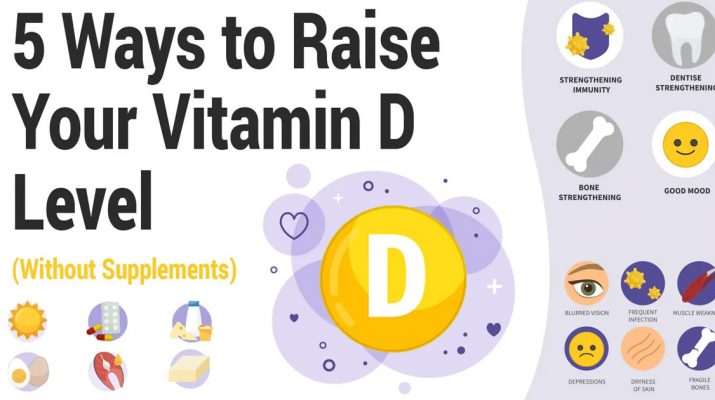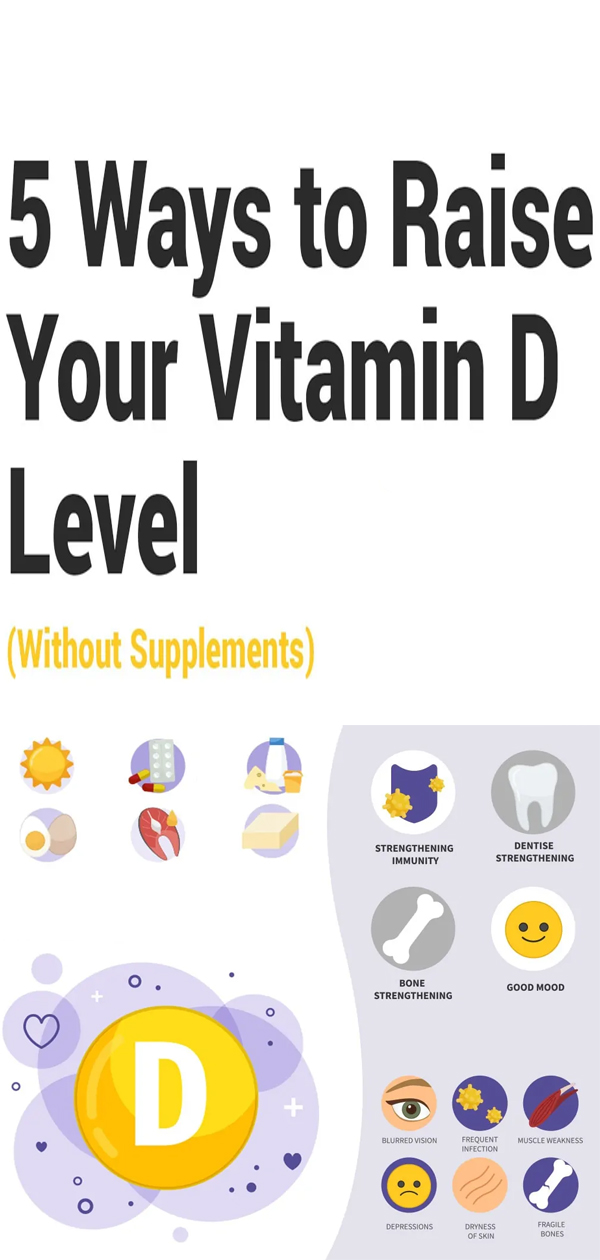Of all the vitamins in existence today, Vitamin D has been sanctioned by many nutritionists as one of the essential vitamins in the body. Although it is one of many readily available vitamins, (I mean you can get it directly from the sun by just walking outside), it is shocking that a good 1 billion people in the world today suffer from its deficiency .
It is more shocking when the latter number has people who live in areas where the sun is thought to be in excess (areas of low latitude). Vitamin D benefits in the body are self-explanatory with the major ones being increasing intestinal absorption of calcium, magnesium, and phosphate, which are then synthesized for mainly healthy bone formation.
Illnesses such as bone and back pains, loss of hair and general weak bone structures are associated with a lack of the vitamin. A common disease in children is rickets. Scientists are, also researching probable connections of vitamin D deficiency to diabetes, cancer, and high blood pressure3.
The older one becomes, the higher the level of Vitamin D benefits required, Nutritionists put a healthy level of this vitamin at approximately 400 IU and 700 IU (international units) for both children and adults. The highest amount being 800 required people aged around 65 and above.
Maintaining such a level is not an easy task and requires patience and constant dedication. If your levels are low, a few ways can aid in raising the standards to the required amount.
Ways To Raise Your Vitamin D Levels
1. Sun
The levels of deficiency today have increased. This is because contrary to earlier times where people spent more time in the outdoors, most of our time today is spent inside the home or inside workstations behind a desk trying to complete a report that is way past its deadline.
Most of these workspaces are in shades where the access of the sun by the body is limited. Researchers recommend not less than a daily exposure of 30 minutes of the body to the sun.
A few daily routines can help you give the body the highly anticipated Vitamin D benefits.
- Exposing your arms directly to the sun for 20-25 minutes. This is as simple as it sounds. Just pick a lean back chair, put it outside during a sunny day and let your body enjoy the sunshine. Do not sit under a shade; the essence of sitting outside is to expose the authority to direct sunlight.
- Getting out of the office and strolling around under the sun for a few minutes now and then could be a better alternative for those whose schedules are too busy and don’t allow sitting in the sun for too long. I am sure you could spare some time for your bones.
- Letting children do a lot of outdoor activities is an excellent way to raise the ‘sunshine vitamin’ levels in their bodies, especially since their developing bones indirectly require high levels.
- Taking a break from work and traveling to sun-rich areas is another option to enjoy and access the various benefits especially during the winter when only a few minutes of UV light can be experienced in days or weeks.
- Exercising in the sun regularly means merely a good increased blood flow and hence a faster rate of synthesis which directly translates to a high vitamin absorption rate in the body.
Although staying in the sun is a good and perfect natural way to increase its amounts, care should be taken to avoid sunburns and skin rashes. Consultation should be made to the doctor to prevent such adverse effects.
The sun can also cause skin cancer, and necessary applications should be acquired from the doctor to enjoy the benefits of the beautiful sunshine.
Generally, the sun is one of the best sources of the vitamin. It follows that vitamin-deficient patients are given a prescription to sit in the sun for hours daily; Imagine getting a subscription from a doctor to sunbathe!
The best source of vitamin D is sunlight says Kelly Pritchett, Ph.D., R.D., spokesperson for the Academy of Nutrition and Dietetics and assistant professor of nutrition and exercise science at Central Washington University.
2. Fatty Fish
Fish is known to be a significant source of many vitamins. The vitamin is synthesized from the fat found in the body of fish.
A good serving of fatty fish two to three times in a week is profitable with a 4-ounce daily serving having around 127 percent of the recommended amount. The following fish are known to contain reliable levels.
- Salmon
- Herring
- Tuna
- Mackerel
- Sardines
3. Fortified Foods (Fruits And Vegetables)
Fortified foods are known to have a good quantity of the vitamin. It is, however, essential to take note of the packaging of these fortified foods as some lack it. These fortified foods can be considered as whole meals or supplemented with other flours. It might be beneficial when these fortified foods are taken as snacks especially for children and older people.
Below are some of these foods
- Soy milk (a four-ounce serving provides approximately 17 percent of daily needs)
- Rice milk
- Orange juice
- Cereals
- Bread
- Tofu
- Mushrooms
4. Animal Extracted Foods
General milk gotten from animals contains vitamin D. This translates directly to most of the milk products such as cheese and yogurt having it. Ricotta cheese is well known for its richness in the vitamin and doctors are keen to point out Vitamin D benefits that are output from this kind of cheese.
Beef liver is also rich in the vitamin, and substantial amounts of liver can easily be incorporated into daily servings.
Eggs, and specifically the egg yolks, have and could provide around 7 percent of daily sunshine vitamin needs. Having a couple of egg yolks especially for people with deficiency in a single day is indeed fulfilling. Since eggs have fat, the fat goes a long way in assisting in the absorption of the vitamin by the intestinal walls.
This is supported by the quality of this vitamin being fat soluble.
Pork ribs have a good content of this vitamin although care should be avoided since they possess an abnormally high-fat content.
5. Ultra Violet (Uv) Lamps And Bulbs
Artificial UV ray bulbs and lights have been developed today to assist those with absorption deficiencies and are at extreme risk of illnesses. The lamps are made with a width of about 17 inches and a length of 25 inches.
These lamps have high rates of UV Ray emission and pose the same risks to skin and eyes. It is therefore advisable and goes without saying that they are made for those with a good doctor’s recommendation.
Appropriate eye protection is also employed in such cases.
Increasing the levels of the sunshine vitamin in the body entails playing around with your lifestyle and diet. This is the reason for the term balanced diet.
The concentrations required to increase the level of this vitamin in the body differ from person to person.
For example, a person with an average level does not require vast amounts of these sources of the vitamin. A person with high or low vitamin levels may need moderate or high levels of this vitamin and hence low or high amount of the sources above respectively.
Understanding your levels is necessary to avoid wastage of resources and also deficiency illnesses. This is why it is advisable to have a nutrition advisor diagnose you before embarking on the level raising journey.
Can Too much of this vitamin be harmful? Yes! Too much of everything is poisonous! Huge levels are generally accompanied by nausea, constipation and weight loss. Excess vitamins may destroy the kidneys. High vitamin levels increase blood calcium content which indirectly causes disorientation and heartbeat issues.
Excessive vitamin obtained from the sun isn’t much poisonous as the body limits the amount of this vitamin it synthesizes from the sun. You can stay and bake yourself in sunlight for as long as you wish. Supplements, however, are the leading cause of the effects associated with high levels. It is most advisable to pursue natural solutions to deficiencies rather than artificially synthesized supplements.
Final Thoughts On Increasing Levels And Vitamin D Benefits
Interestingly, being exposed to things such as cigarette smoke deducts enormous amounts of the vitamin in the bloodstream and respiratory areas4. This is why many smokers have respiratory issues since the bones and muscles are weak due to its deficiency.
Vitamin D benefits are long-lasting, and there’s no excuse (especially with this knowledge) to avoid living a fulfilling life, especially when you are confident that your bones, muscles and general body structure won’t fail you.
These Vitamin D level raising methods are generally beneficial in that; They, not only aid in increasing Vitamin D levels, but also supply extra nutrients and different vitamins to the body.
Adding fatty foods to your meal is a bonus due to its solubility in fats as mentioned earlier.
With the knowledge on how to raise the level of vitamin D in your body gained, it will be easier for you to understand different ways in which you can increase your vitamin D levels in the body without necessarily having to struggle. We hope a lifestyle/ dietary change is on its way.


